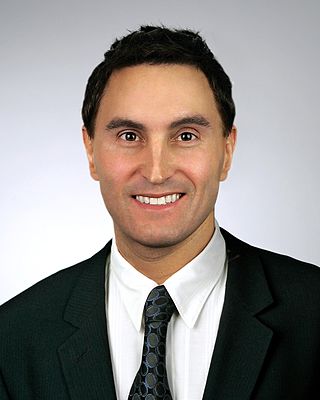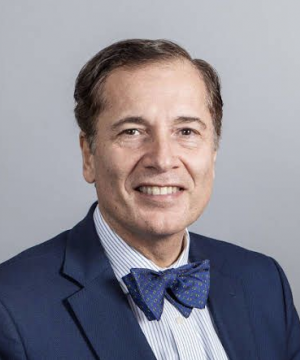
Far-sightedness, also known as long-sightedness, hypermetropia, and hyperopia, is a condition of the eye where distant objects are seen clearly but near objects appear blurred. This blur is due to incoming light being focused behind, instead of on, the retina due to insufficient accommodation by the lens. Minor hypermetropia in young patients is usually corrected by their accommodation, without any defects in vision. But, due to this accommodative effort for distant vision, people may complain of eye strain during prolonged reading. If the hypermetropia is high, there will be defective vision for both distance and near. People may also experience accommodative dysfunction, binocular dysfunction, amblyopia, and strabismus. Newborns are almost invariably hypermetropic, but it gradually decreases as the newborn gets older.

LASIK or Lasik, commonly referred to as laser eye surgery or laser vision correction, is a type of refractive surgery for the correction of myopia, hyperopia, and an actual cure for astigmatism, since it is in the cornea. LASIK surgery is performed by an ophthalmologist who uses a laser or microkeratome to reshape the eye's cornea in order to improve visual acuity.

Photorefractive keratectomy (PRK) and laser-assisted sub-epithelial keratectomy (LASEK) are laser eye surgery procedures intended to correct a person's vision, reducing dependency on glasses or contact lenses. LASEK and PRK permanently change the shape of the anterior central cornea using an excimer laser to ablate a small amount of tissue from the corneal stroma at the front of the eye, just under the corneal epithelium. The outer layer of the cornea is removed prior to the ablation.
A microkeratome is a precision surgical instrument with an oscillating blade designed for creating the corneal flap in LASIK or ALK surgery. The normal human cornea varies from around 500 to 600 μm in thickness; and in the LASIK procedure, the microkeratome creates an 83 to 200 μm thick flap. The microkeratome uses an oscillating blade system, which has a blade that oscillates horizontally as the blade travels vertically for a precise cut. This piece of equipment is used all around the world to cut the cornea flap. The microkeratome is also used in Descemet's stripping automated endothelial keratoplasty (DSAEK), where it is used to slice a thin layer from the back of the donor cornea, which is then transplanted into the posterior cornea of the recipient. It was invented by Jose Barraquer and Cesar Carlos Carriazo in the 1950s in Colombia.

Refractive surgery is an optional eye surgery used to improve the refractive state of the eye and decrease or eliminate dependency on glasses or contact lenses. This can include various methods of surgical remodeling of the cornea (keratomileusis), lens implantation or lens replacement. The most common methods today use excimer lasers to reshape the curvature of the cornea. Refractive eye surgeries are used to treat common vision disorders such as myopia, hyperopia, presbyopia and astigmatism.

An Intraocular lens (IOL) is a lens implanted in the eye usually as part of a treatment for cataracts or for correcting other vision problems such as short sightedness and long sightedness; a form of refractive surgery. If the natural lens is left in the eye, the IOL is known as phakic, otherwise it is a pseudophakic lens. Both kinds of IOLs are designed to provide the same light-focusing function as the natural crystalline lens. This can be an alternative to LASIK, but LASIK is not an alternative to an IOL for treatment of cataracts.

Mark Cohen is a Canadian laser eye surgeon who practices in Montreal and Toronto. In 2001, he and Avi Wallerstein founded LASIK MD, Canada's largest provider of laser refractive surgery. As of 2013, LASIK MD performs over sixty percent of all laser vision correction procedures in Canada. He is one of only 14 certified C-LASIK instructors in North America.

Avi Wallerstein is a Canadian ophthalmologist and laser eye surgeon who specializes in surgical vision correction, also termed refractive eye surgery. He practises in Montreal and Toronto. In 2001, he co-founded LASIK MD with Mark Cohen. LASIK MD is Canada's largest provider of laser refractive surgery, performing over 60,000 procedures a year. He is one of only 14 certified CLasik instructors in North America.

Gholam A. Peyman is an Iranian American ophthalmologist, retina surgeon, and inventor. He is best known for his invention of LASIK eye surgery, a vision correction procedure designed to allow people to see clearly without glasses. He was awarded the first US patent for the procedure in 1989.
Laser blended vision is a laser eye treatment which is used to treat presbyopia or other age-related eye conditions. It can be used to help people that simply need reading glasses, and also those who have started to need bifocal or varifocal spectacle correction due to ageing changes in the eye. It can be used for people who are also short-sighted (myopia) or long-sighted (hyperopia) and who also may have astigmatism.
Jeff Machat MD, FRCSC, DABO is an ophthalmologist in the United States and Canada specializing in surgical vision correction better known as refractive eye surgery.
The Alpins Method is a system to plan and analyze the results of refractive surgical procedures, such as laser in-situ keratomileus (LASIK). The Alpins Method is also used to plan cataract/toric intraocular lens (IOL) surgical procedures.
Peter S. Hersh is an American ophthalmologist, researcher, and specialist in LASIK eye surgery, keratoconus, and diseases of the cornea. He co-authored the article in the journal Ophthalmology that presented the results of the study that led to the first approval by the U.S. Food and Drug Administration (FDA) of the excimer laser for the correction of nearsightedness in the United States. Hersh was also medical monitor of the study that led to approval of corneal collagen crosslinking for the treatment of keratoconus. He was the originator, in 2015, of CTAK for keratoconus, patent holder, and co-developer.
Raymond Mark Stein, MD, FRCSC, DABO, is a Canadian ophthalmologist. He practices refractive and cataract surgery. He is the medical director of the Bochner Eye Institute in Toronto, Ontario and Chief of Ophthalmology at the Scarborough General Hospital.
Sheraz Daya is a British ophthalmologist. Daya founded the Centre for Sight in 1996, and works in stem-cell research and sight restoration and correction surgery.
Post-LASIK ectasia is a condition similar to keratoconus where the cornea starts to bulge forwards at a variable time after LASIK, PRK, or SMILE corneal laser eye surgery. However, the physiological processes of post-LASIK ectasia seem to be different from keratoconus. The visible changes in the basal epithelial cell and anterior and posterior keratocytes linked with keratoconus were not observed in post-LASIK ectasia.

Noel Alpins is an Australian ophthalmologist who developed the Alpins method of astigmatism analysis used in refractive, corneal, and cataract surgery, used in the research of LASIK.

John Marshall MBE, FMedSci, PhD, DSc, FRCPath, FRSB, FRCOphth(Hon), FRCOptom (Hon), FARVO is a British medical scientist and inventor. Currently he is the Frost Professor of Ophthalmology at the Institute of Ophthalmology UCL and Emeritus Professor King's College London. He is a pioneer of laser eye surgery.
Stephen Slade is an American eye surgeon who performed the first LASIK in the United States in 1991 along with Dr. Stephen Brint. He was a lead investigator for panel approval at the FDA for both the Crystalens and the implantable contact lens. Slade performed the first laser cataract surgery in the United States in 2010. He also performed the first Raindrop Corneal Inlay in the United States in both the clinical trials and commercially. He continues to participate in and consult for many FDA clinical trials.

Dimitri Azar is an American ophthalmologist, professor, and businessman who leads Twenty Twenty Therapeutics, a joint venture established by Santen and Verily. Azar has held roles at Novartis and Verily, Alphabet's Life sciences research organization. He served as dean of the College of Medicine at the University of Illinois at Chicago (UIC) from 2011 to 2018.










